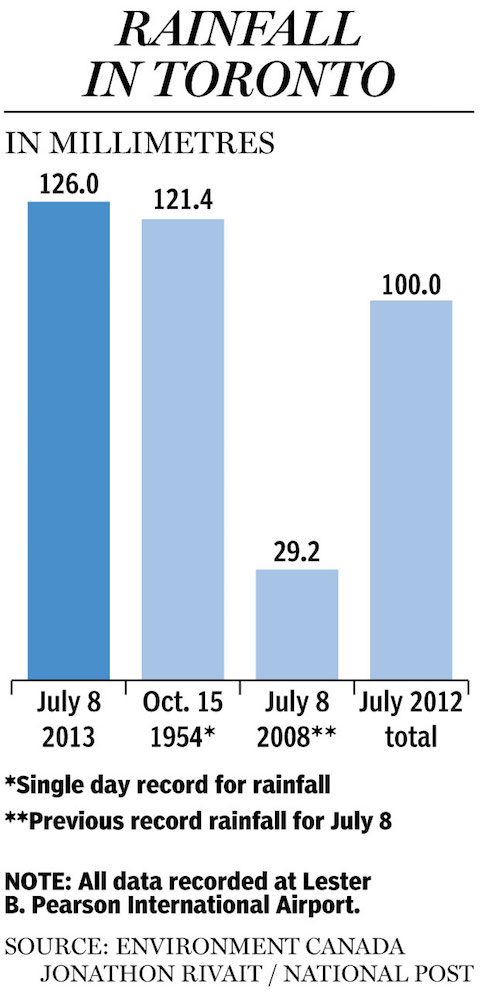Windsor, Ontario’s early October “once in a century” flood caught the whole city off-guard. More than 140 mm of rain fell within a 24-hour period, which quickly overwhelmed the drainage systems of the city and its surrounding municipalities. It’s been just under two weeks since the flood devastated homes and businesses, but its victims are still cleaning up.
Windsor Mayor Drew Dilkens called for a state of emergency to help homeowners and business owners who do not have flood insurance with a deadline of Jan. 21st, 2017 to apply.
“The point is, make sure you get your name on the list within 120 days if you’re going to apply for the provincial program,” Mayor Dilkens told the Windsor Star.
The cleanup so far has been a daunting task with the city collecting more than 800 tons of curbside material in the first three days alone; in a normal garbage week, the city collects 200 tons. However, there are still mountains of garbage that need to be collected as residents continue to clean up the best they can.
Brian Yelle, a restoration supervisor at Paul Davis Restorations in Windsor, says the damage he saw the day after was unimaginable; entire neighbourhoods were under 2 feet of water at street level.
“It [first basement he saw] looked like a war zone,” Yelle says. “The water pressure was so strong that water was shooting out at a 90-degree angle from the toilet.”
Since the water overwhelmed the sewers, human waste filled basements between 2-4 feet with each home taking 1-3 days for Yelle’s team to repair.
The hardest area affected was between Lauzon and Lesperence streets, which is a low-lying area that used to be a railyard for CN Rail. It’s these areas that would benefit most from a canal to provide relief for these storms without having to overhaul the existing underground infrastructure completely.
Windsor is a sobering reminder of just how vulnerable Toronto is in the case of a catastrophic flood. The flood that hit the city in 2013 is on record as being the most expensive natural disaster in Ontario’s history, according to the Insurance Bureau of Canada. Preliminary estimates totalled the damage at more than $850 million. This is because the 2013 storm more than tripled downtown Toronto’s rainfall record; it was so severe that even Mississauga had to ask the province for financial assistance.
The Toronto Flood of 2013

Back in 2013, Toronto resident Frank Corraro told the Toronto Star that this was the second time his home had been hit after another major storm caused a flood in 2009.
“The cleanup the next day was the sobering moment. There were a couple of thick inches of mud on our basement floor and a really horrible smell. That’s when the reality kicked in,” said Corrado, who didn’t see a future for his family in the home.
“We’re in the process of looking for a new home because it would be stupid for us to stay and wait for the third flood,” he said back in 2013, “because it will come.”
If you feel your home is at risk for flooding, City Wide Group is ready to provide guaranteed waterproofing of your home. Feel free to give us a call today at 416.283.5500 or contact us online.










